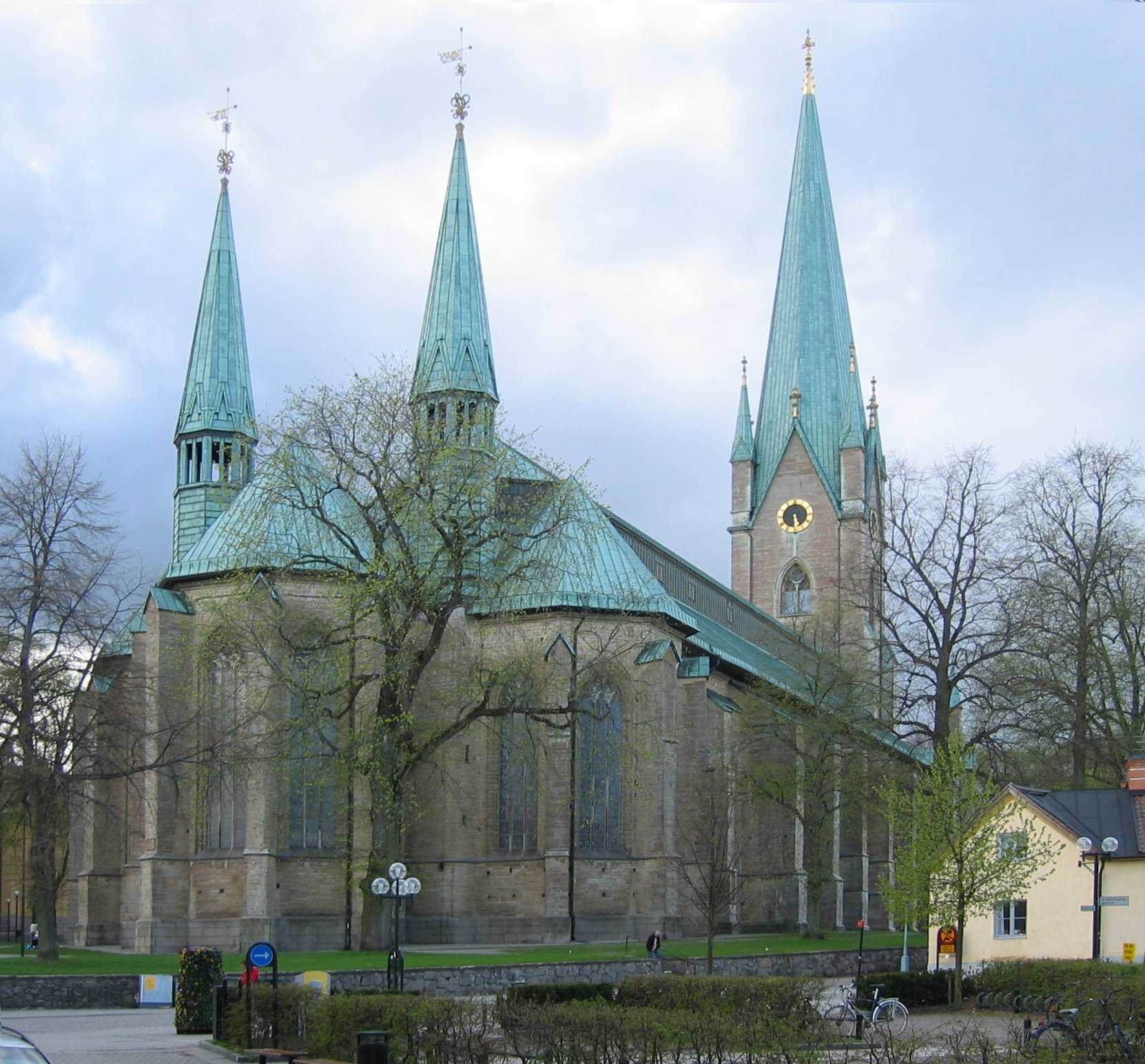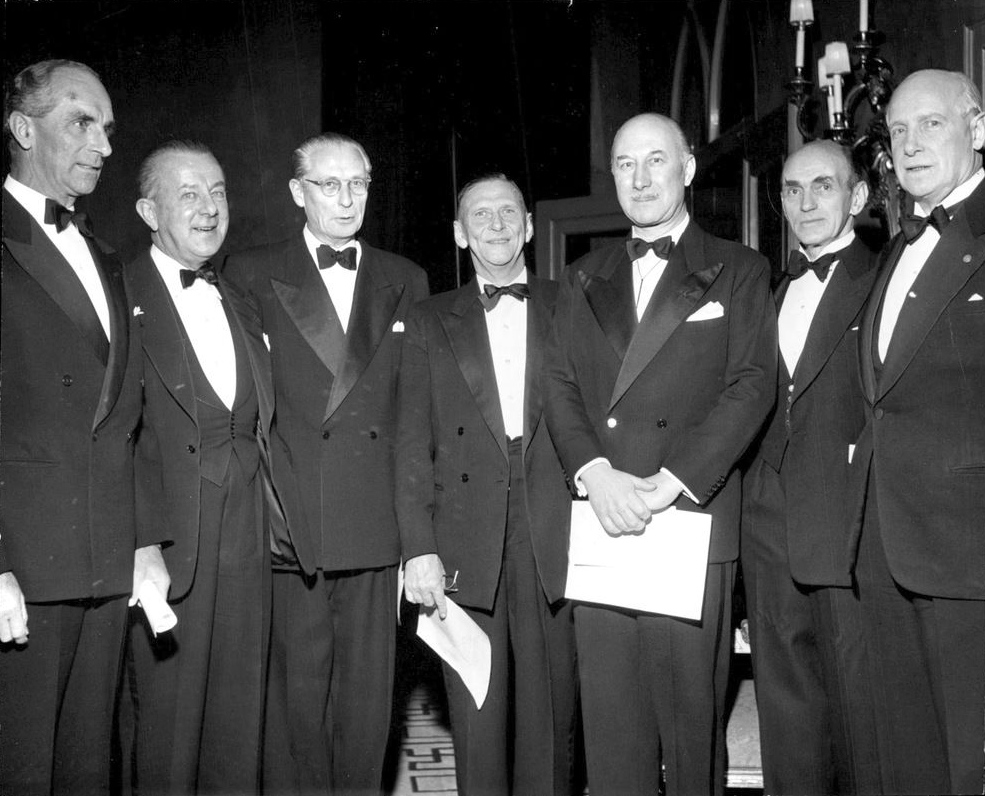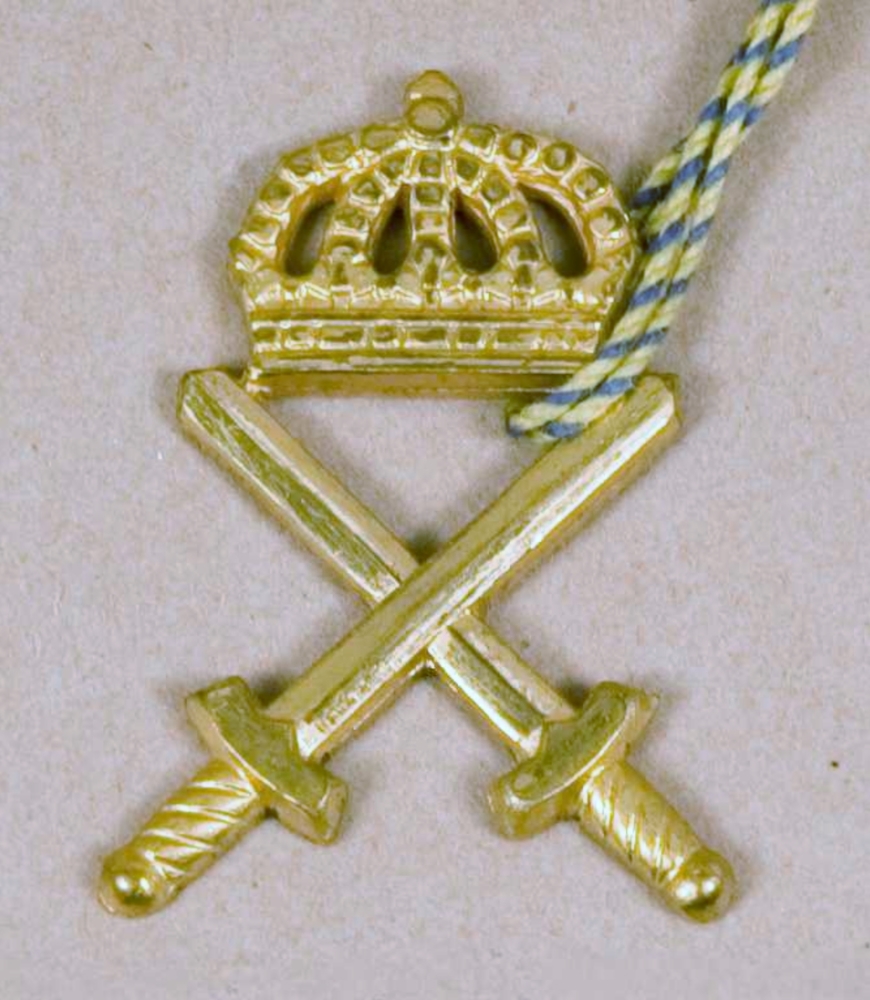|
Carl Eric Almgren
General Carl Eric Åke Almgren (4March 1913 – 20May 2001) was a Swedish Army officer. Almgren served as Chief of the Defence Staff from 1961 to 1967, military commander of the Eastern Military District (Milo Ö) from 1967 to 1969 and as the Chief of the Army from 1969 to 1976. Early life Almgren was born on 4 March 1913 in Linköping, Sweden, the son of captain Carl Almgren and his wife Esther (née Tell). The father, Carl, who derived from a farming family, was a commissioned officer in the Life Grenadier Regiment, where he was among the more prominent representatives of his corps and had several positions both in the regiment and in the city of Linköping. Carl Eric did very well in school and was chairman of the school association. It is said to have been a disappointment for Almgren's teacher that with his striking theoretical endowment did not choose the academic path. Almgren was an avid reader and in 1930 at the age of 17 he read, according to his reading reco ... [...More Info...] [...Related Items...] OR: [Wikipedia] [Google] [Baidu] |
Linköping
Linköping () is a city in southern Sweden, with around 105,000 inhabitants as of 2021. It is the seat of Linköping Municipality and the capital of Östergötland County. Linköping is also the episcopal see of the Diocese of Linköping (Church of Sweden) and is well known for its cathedral. Linköping is the center of an old cultural region and celebrated its 700th anniversary in 1987. Dominating the city's skyline from afar is the steeple of the cathedral, Domkyrka. Nowadays, Linköping is known for its university and its high-technology industry. Linköping wants to create a sustainable development of the city and therefore plans to become a carbon-neutral community by 2025. Located on the Östergötland Plain, Linköping is closely linked to Norrköping, roughly to the east, near the sea. History The city is possibly named after the '' Lionga ting'' assembly which according to Medieval Scandinavian laws was the most important thing in Östergötland. Exact location ... [...More Info...] [...Related Items...] OR: [Wikipedia] [Google] [Baidu] |
Royal Swedish Army Staff College
The Royal Swedish Army Staff College ( sv, Kungliga Krigshögskolan, KHS) was a Swedish Army training establishment between 1866 and 1961, providing courses for army officers. It was the home of the Swedish Army's staff college, which provided advanced training for officers. It was located within the Stockholm Garrison in Stockholm, Sweden. History 1866–1951 The Royal Swedish Army Staff College was the name which that the former Higher Artillery School (''Högre artilleriläroverket'') in Marieberg adopted in November 1866. The Swedish Army then received for the first time a training course for staff officers. The initiator of the 1870s reform of the higher officer training was the Chief of the General Staff Hugo Raab. By promoting an officer training in accordance with academic principles he laid the foundation for today's officer training on a scientific basis. In 1878 the name was passed over to the new educational institution in Stockholm, which would become the academy of ... [...More Info...] [...Related Items...] OR: [Wikipedia] [Google] [Baidu] |
Hälsinge Regiment
The Hälsinge Regiment ( sv, Hälsinge regemente), designations I 14, I 14/Fo 49 and I 14/Fo 21, was a Swedish Army infantry regiment that traced its origins back to the 16th century. It was disbanded in 1997. The regiment's soldiers were originally recruited from the provinces of Hälsingland and Gästrikland, and it was later garrisoned in Gästrikland. History The regiment has its origins in fänikor (companies) raised in Hälsingland and Gästrikland in the 1550s and 1560s. In 1615, these units—along with fänikor from the nearby provinces of Medelpad, Ångermanland and Västerbotten—were organised by Gustav II Adolf into Norrlands storregemente, of which eleven of the total 24 companies were recruited in Hälsingland and Gästrikland. Norrlands storregemente consisted of three field regiments, of which Hälsinge Regiment was one. Sometime around 1624, the grand regiment was permanently split into three smaller regiments, of which Hälsinge Regiment was one. The ... [...More Info...] [...Related Items...] OR: [Wikipedia] [Google] [Baidu] |
Swedish Defence University
The Swedish Defence University ( sv, Försvarshögskolan, FHS) is situated on Drottning Kristinas väg 37 in Östermalm, Stockholm City Centre, next to the campus of the Royal Institute of Technology. History Today's Swedish Defence University marks the latest development in a long line of military education tradition. The Higher Artillery College in Marieberg was established in Stockholm in the 19th century. The Swedish Defence University has existed in its present form since 1997. The University was established as a national university college on January 1, 2008, allowing it to issue academic degrees. Formerly known in English as the Swedish National Defence College, the University adopted its current name on 1 February 2015. In 2018 the Swedish Defence University received permission to grant two-year master's degrees. Programme The University trains and educates domestic and international military and civilian personnel. The University offers training for career and reserve ... [...More Info...] [...Related Items...] OR: [Wikipedia] [Google] [Baidu] |
Västernorrland Regiment
The Västernorrland Regiment ( sv, Västernorrlands regemente), designation I 21, is a Swedish Army infantry unit which operated in various forms the years 1869–1983, 1991–2000 and from 2022. It is located in Sollefteå Garrison in Sollefteå with a detachment in Östersund. History The regiment was the only regiment that grew out of the 1812 conscription organization and originated in Västernorrland Conscription Battalion (''Västernorrlands beväringsbataljon'') which was formed on 19 October 1854. The conscription battalion was until 29 March 1869 subordinate to the commander of Jämtland Ranger Regiment, Jämtland Ranger Corps (No 23). From 29 March 1869, the battalion became an independent unit and on 1 January 1887, the name Västernorrland Battalion was adopted. On 1 January 1893, the battalion was reorganized into a regiment and adopted the name Västernorrland Regiment (No 29), which in 1902 was adjusted to No 28. In 1914, all order numbers within the Swedish Army wer ... [...More Info...] [...Related Items...] OR: [Wikipedia] [Google] [Baidu] |
Swedish Air Force Flying School
Swedish Air Force Flying School ( sv, Krigsflygskolan), also F 5 Ljungbyhed, or simply F 5, is a former Swedish Air Force training wing with the main base located in Ljungbyhed in southern Sweden. History The moor at Ljungby was adopted for military use in 1658 by the Skånska husarregementet, Scanian Hussar Regiment as a training ground. In 1910, the first flights were commenced from the grounds. Enoch Thulin set up a public flying school on June 16, 1915. In 1926, the newly formed Swedish Air Force set up their flying school at Ljungbyhed. Between 1983 and 1996 the Air Force school of meteorology was also located at Ljungbyhed. In 1996, F 5 Ljungbyhed was decommissioned and the pilot training was taken over by the Scania Wing (F 10). Currently, Lund University School of Aviation has commercial flying training at Ljungbyhed Airport (ICAO: ESTL). Heraldry and traditions Coat of arms The units first coat of arms was used until 1994. Blazon: "Azure, under three open crowns or ... [...More Info...] [...Related Items...] OR: [Wikipedia] [Google] [Baidu] |
Army Staff (Sweden)
Army Staff ( sv, Arméstaben, Ast) is the staff of the Chief of the Swedish Army. It was originally established in 1937. The Army Staff's duties then included, among other things to assist the Chief of the Army with leadership of the Army's mobilization, training, tactics, organization, equipment and personnel to the extent that such activity was not directly related to operational activities, which was handled by the Defence Staff. In 1994 the Swedish Armed Forces Headquarters took over the Army Staff's duties. In 2019, the Army Staff was re-established, now located in Enköping Garrison. History 1937–1963 On 1 July 1937, the position of Chief of the Army (''Chefen för armén'') was established. The Chief of the Army would under the King in Council exercise the highest military leadership of the country defence. At his side, the Chief of the Army had an Army Staff to assist the Chief of the Army in his duties. Within the Army Staff the work was initially conducted in the f ... [...More Info...] [...Related Items...] OR: [Wikipedia] [Google] [Baidu] |
Estonia
Estonia, formally the Republic of Estonia, is a country by the Baltic Sea in Northern Europe. It is bordered to the north by the Gulf of Finland across from Finland, to the west by the sea across from Sweden, to the south by Latvia, and to the east by Lake Peipus and Russia. The territory of Estonia consists of the mainland, the larger islands of Saaremaa and Hiiumaa, and over 2,200 other islands and islets on the eastern coast of the Baltic Sea, covering a total area of . The capital city Tallinn and Tartu are the two largest urban areas of the country. The Estonian language is the autochthonous and the official language of Estonia; it is the first language of the majority of its population, as well as the world's second most spoken Finnic language. The land of what is now modern Estonia has been inhabited by '' Homo sapiens'' since at least 9,000 BC. The medieval indigenous population of Estonia was one of the last " pagan" civilisations in Europe to adopt Ch ... [...More Info...] [...Related Items...] OR: [Wikipedia] [Google] [Baidu] |
Occupation Of The Baltic States
The Baltic states of Estonia, Latvia and Lithuania were invaded and occupied in June 1940 by the Soviet Union, under the leadership of Stalin and auspices of the Molotov-Ribbentrop Pact that had been signed between Nazi Germany and the Soviet Union in August 1939, immediately before the outbreak of World War II. The three countries were then annexed into the Soviet Union (formally as " constituent republics") in August 1940. The United States and most other Western countries never recognised this incorporation, considering it illegal. On 22 June 1941, Nazi Germany attacked the Soviet Union and within weeks occupied the Baltic territories. In July 1941, the Third Reich incorporated the Baltic territory into its ''Reichskommissariat Ostland''. As a result of the Red Army's Baltic Offensive of 1944, the Soviet Union recaptured most of the Baltic states and trapped the remaining German forces in the Courland pocket until their formal surrender in May 1945. Latvian plenipotentiar ... [...More Info...] [...Related Items...] OR: [Wikipedia] [Google] [Baidu] |
Soviet Union
The Soviet Union,. officially the Union of Soviet Socialist Republics. (USSR),. was a transcontinental country that spanned much of Eurasia from 1922 to 1991. A flagship communist state, it was nominally a federal union of fifteen national republics; in practice, both its government and its economy were highly centralized until its final years. It was a one-party state governed by the Communist Party of the Soviet Union, with the city of Moscow serving as its capital as well as that of its largest and most populous republic: the Russian SFSR. Other major cities included Leningrad (Russian SFSR), Kiev (Ukrainian SSR), Minsk ( Byelorussian SSR), Tashkent (Uzbek SSR), Alma-Ata (Kazakh SSR), and Novosibirsk (Russian SFSR). It was the largest country in the world, covering over and spanning eleven time zones. The country's roots lay in the October Revolution of 1917, when the Bolsheviks, under the leadership of Vladimir Lenin, overthrew the Russian Provisional Government ... [...More Info...] [...Related Items...] OR: [Wikipedia] [Google] [Baidu] |
Kaunas
Kaunas (; ; also see other names) is the second-largest city in Lithuania after Vilnius and an important centre of Lithuanian economic, academic, and cultural life. Kaunas was the largest city and the centre of a county in the Duchy of Trakai of the Grand Duchy of Lithuania and Trakai Palatinate since 1413. In the Russian Empire, it was the capital of the Kaunas Governorate from 1843 to 1915. During the interwar period, it served as the temporary capital of Lithuania, when Vilnius was seized and controlled by Poland between 1920 and 1939. During that period Kaunas was celebrated for its rich cultural and academic life, fashion, construction of countless Art Deco and Lithuanian National Romanticism architectural-style buildings as well as popular furniture, the interior design of the time, and a widespread café culture. The city interwar architecture is regarded as among the finest examples of European Art Deco and has received the European Heritage Label. It contributed to ... [...More Info...] [...Related Items...] OR: [Wikipedia] [Google] [Baidu] |
Riga
Riga (; lv, Rīga , liv, Rīgõ) is the capital and largest city of Latvia and is home to 605,802 inhabitants which is a third of Latvia's population. The city lies on the Gulf of Riga at the mouth of the Daugava river where it meets the Baltic Sea. Riga's territory covers and lies above sea level, on a flat and sandy plain. Riga was founded in 1201 and is a former Hanseatic League member. Riga's historical centre is a UNESCO World Heritage Site, noted for its Art Nouveau/Jugendstil architecture and 19th century wooden architecture. Riga was the European Capital of Culture in 2014, along with Umeå in Sweden. Riga hosted the 2006 NATO Summit, the Eurovision Song Contest 2003, the 2006 IIHF Men's World Ice Hockey Championships, 2013 World Women's Curling Championship and the 2021 IIHF World Championship. It is home to the European Union's office of European Regulators for Electronic Communications (BEREC). In 2017, it was named the European Region of Gastronomy. I ... [...More Info...] [...Related Items...] OR: [Wikipedia] [Google] [Baidu] |


.png)
